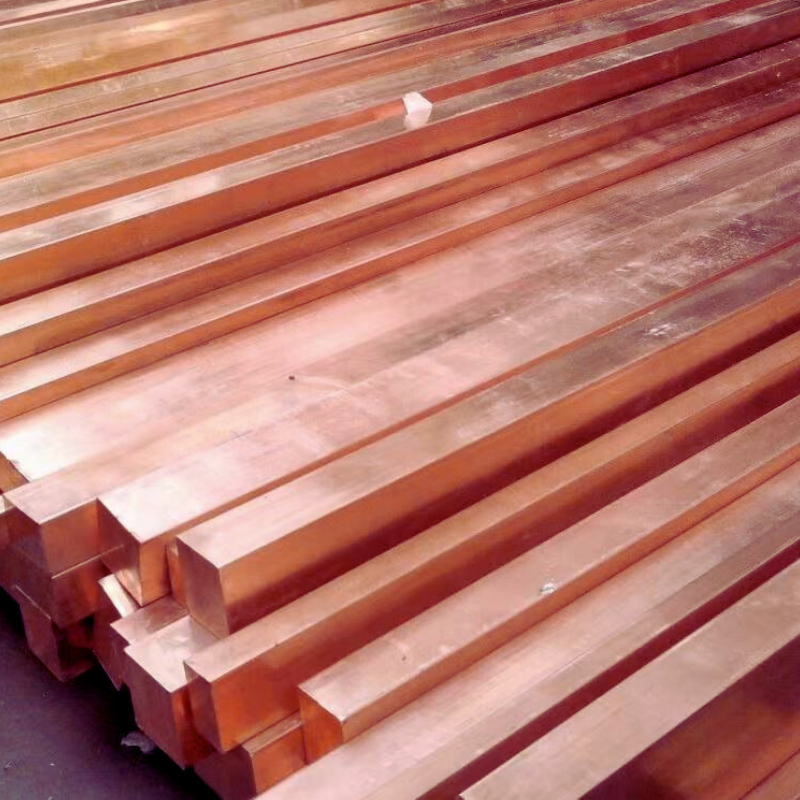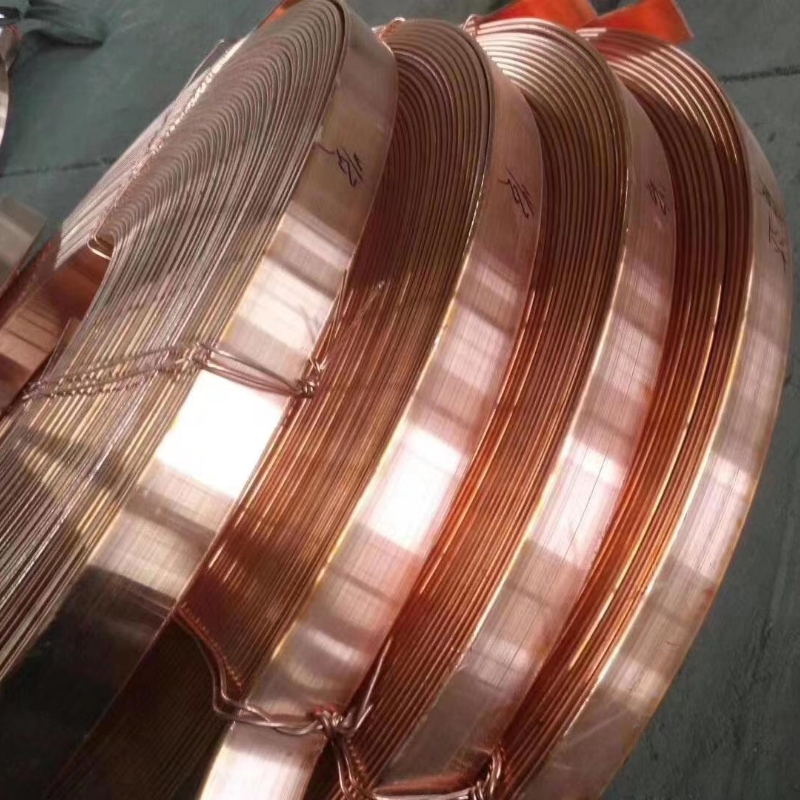Copper Round Square Rods for Electrical Use
Copper rods are widely used in the field of electrical wires and cables, mainly due to their excellent conductivity and durability.
Main Specifications:
Round Copper Rod:
Diameter: Φ1.5mm, Φ3mm, Φ5mm, Φ10mm, Φ20mm, Φ50mm, Φ100mm, Φ150mm, Φ200mm
Length: 1000mm, 2000mm, 3000mm, 4000mm
Square Copper Rod:
Size: 5mm x 5mm, 10mm x 10mm, 20mm x 20mm, 50mm x 50mm, 100mm x 100mm
Length: 1000mm, 2000mm, 3000mm, 4000mm
Hexagonal Copper Rod:
Distance Across Flats: 10mm, 20mm, 30mm, 50mm, 100mm
Length: 1000mm, 2000mm, 3000mm, 4000mm
Standards:ASTM B187,EN13601,JIS H3250,GB/T4423
Special Specifications
Special specifications can be customized according to application needs, such as:
Large Diameter Long Rods: For specific high conductivity engineering projects.
Ultra-Fine Copper Wires: For microelectronics and precision connection applications.
Main Uses of Copper Rods in the Electrical Wires and Cables Field
Conductive Materials:
Power Cables: Copper rods are extensively used as conductive materials in power cables. Due to copper's high conductivity, it efficiently transmits electrical power with minimal energy loss, suitable for various high, medium, and low voltage cables.
Building Wires: In building wires, copper rods are drawn into fine wires used for power transmission, ensuring the safety and reliability of electrical systems.
Electronic Wires: Copper rods are used to manufacture connecting wires for various electronic devices, such as computers, mobile phones, and household appliances, ensuring stable signal transmission.
Grounding and Connection Systems:
Grounding Rods: Copper rods are used to make grounding rods, which are used in the grounding systems of buildings and equipment, providing reliable electrical grounding to prevent electric shocks and electrical fires.
Electrical Connectors: Electrical connectors made from copper rods, such as terminals and connectors, ensure secure and low-resistance electrical connections, widely used in distribution systems and electronic devices.
High-Frequency Cables:
Coaxial Cables: Copper rods are used to manufacture the central conductors of coaxial cables, which are widely used in television, internet, and communication systems, providing low-loss and high-quality high-frequency signal transmission.
RF Cables: In RF cables, copper rods are used as conductors, suitable for wireless communication devices, antennas, and satellite communication systems.
Specialty Cables:
Fire-Resistant Cables: Copper rods are used as conductors in fire-resistant cables, ensuring power transmission in high-temperature environments, commonly used in emergency systems of high-rise buildings, tunnels, and subways.
Submarine Cables: In submarine cables, copper rods are used as conductors, ensuring power transmission in marine environments, suitable for submarine communication and power transmission projects.
Cable Shielding and Sheathing:
Shielding Layer: Copper rods are processed into copper wires or meshes used as shielding layers in cables to prevent electromagnetic interference, ensuring the stability and reliability of signal transmission.
Sheathing Materials: Copper rods are used to manufacture cable sheaths, providing mechanical protection and corrosion resistance, thus extending the cable's service life.

